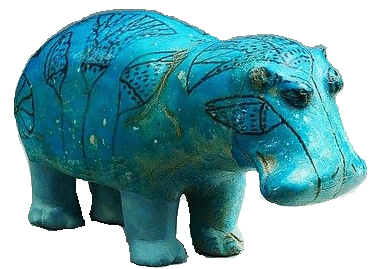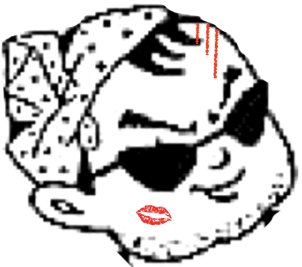
12/16 ヘーゲル「精神現象学」1807:はじめに
12/16 Einleitung,
Phänomenologie des Geistes, 1807

☆ ★このページはヘーゲル「精神現象学」の序文の後につづく「はじめに」の部分です。 INTRODUCTION, The Phenomenology of Mind (Einleitung, Phänomenologie des Geistes) ヘーゲル「精神現象学」の一般的解説は「ヘーゲル『精神現象学』1807ノート」を、参照してくだ さい。課題書とテキストについては「G.W.F.ヘーゲル『精神現象 学』1807年への入門」を参照してください。
☆
| Aber
die Natur des Gegenstandes, den wir untersuchen, überhebt dieser
Trennung oder dieses Scheins von Trennung und Voraussetzung. Das
Bewußtsein gibt seinen Maßstab an ihm selbst, und die Untersuchung wird
dadurch eine Vergleichung seiner mit sich selbst sein; denn die
Unterscheidung, welche soeben gemacht worden ist, fällt in es. Es ist
in ihm eines für ein anderes, oder es hat überhaupt die Bestimmtheit
des Moments des Wissens an ihm; zugleich ist ihm dies andere nicht nur
für es, sondern auch außer dieser Beziehung oder an sich: das Moment
der Wahrheit. An dem also, was das Bewußtsein innerhalb seiner für das
An-sich oder das Wahre erklärt, haben wir den Maßstab, den es selbst
aufstellt, sein Wissen daran zu messen. |
【12】
しかし、私たちが研究している対象物の性質は、この分離、あるいは分離
と前提という外観を超越している。意識はその基準をそれ自体に与えているため、この研究はそれ自体との比較となる。なぜなら、先ほど行った区別は、その中
に含 まれているからだ。それは、それ自体の中で、あるものが別のものとして存在するか、
あるいは、それ自体の中に知識の瞬間としての決定性を有している。同 時
に、この別のものは、それ自体にとってだけでなく、この関係の外側、あるいはそれ自体としても存在する。これが真実の瞬間だ。したがって、意識が、それ自
体の中で、それ自体、あるいは真実であると宣言したものに、意識が自ら設定した基準、すなわち、その知識の測定基準がある。 |
| Nennen wir das Wissen den
Begriff, das Wesen oder das Wahre aber das Seiende oder den Gegenstand,
so besteht die Prüfung darin, zuzusehen, ob der Begriff dem Gegenstande
entspricht. Nennen wir aber das Wesen oder das An-sich des Gegenstandes
den Begriff, und verstehen dagegen unter dem Gegenstande, ihn als
Gegenstand, nämlich wie er für ein anderes ist, so besteht die Prüfung
darin, daß wir zusehen, ob der Gegenstand seinem Begriff entspricht.
Man sieht wohl, daß beides dasselbe ist; das Wesentliche aber ist, dies
für die ganze Untersuchung festzuhalten, daß diese beiden Momente,
Begriff und Gegenstand, Für-ein-anderes- und An-sich-selbst-sein, in
das Wissen, das wir untersuchen, selbst fallen, und hiemit wir nicht
nötig haben, Maßstäbe mitzubringen, und unsere Einfälle und Gedanken
bei der Untersuchung zu applizieren; dadurch, daß wir diese weglassen,
erreichen wir es, die Sache, wie sie an und für sich selbst ist, zu
betrachten. |
知識
を「概念」、「本質」、「真実」と呼び、存在物や対象を「実体」と
呼ぶ場合、その検証とは、概念が対象と一致しているかどうかを確かめることだ。しかし、対象の本質やそれ自体を概念と呼び、それに対して対
象を、対象とし
て、つまり他のものに対してどのように存在するかとして理解する場合、検証とは、対象が概念と一致しているかどうかを観察することである。この二つは同じ
ことであることは明らかだが、重要なのは、この二つの要素、概念と対象、つまり「相
互に存在すること」と「それ自体として存在すること」が、私たちが考察
する知識そのものに含まれていることを、考察全体を通して確認することだ。そうすれば、基準を持ち込んだり、考察に自分の考えや想像を適用
したりする必要 はなくなる。これらを除外することで、私たちは、物事がそれ自体として、それ自体で あるように観察することができる。 |
☆
★ ハイデガーのコメンタリー
(12/16)
ハイデガー「ヘーゲルにおける経験概念」:ヘーゲル「精神現象学」はじめに第12節(部分)の解説
☆
| ・ここに新しく浮かび上がってきた難点から叙
述を解放する(145) |
|
| THE TWELFTH SECTION extricates the presentation from
this newly emerged difficulty. The release is brought about
by the simple reference to the nature of the object which
the presentation presents. That object is consciousness itself.
Its nature is what of its own accord emerges into appearance.
Is it in the nature of consciousness to harbor a standard?
If it is, then consciousness must of itself offer the possibility
of being at once the measure and what is measured.
It must be such that in this respect it is distinguished in itself
but at the same time not distinct. Something of the
kind became apparent in the tenth section. The essential
ambiguity of consciousness, that it is the distinction of the
representation, while the representation is at the same time
no distinction, points to a dichotomy in the nature of consciousness.
That dichotomy contains the possibility that consciousness
by its very nature can be both at the same time,
the measure and what is measured. If we understand the
ambiguity not as a lack of unequivocality, but ai the mark
of consciousness' own essential unity, then consciousness
shows in its ambiguousness that the two determinations,
knowledge and truth, which at first were represented as
separate, belong together. It is the nature of consciousness
that makes measuring possible and yields the measure.
Hegel characterizes the nature of the object of a presentation
which represents phenomenal knowledge, with a
second statement about consciousness. The first statement,
made in the eighth section, reads: "But consciousness is for
itself its own Concept." It is now followed by the second
statement: "Consciousness provides itself with its own
standard." The sentence is conspicuous for its phrasing. But
though this usage strikes us as strange, it is familiar to
Hegel, by virtue of what he discerns as the nature of the
object. Why does he say "itself with its own standard" instead
of saying: "Consciousness has its standard in itself"?
Because it is in the nature of consciousness that there is a
standard for it. That standard is not introduced from somewhere
or other so that consciousness may take it up and so
have it for itself. Nor is the standard first applied to consciousness
from outside it. Consciousness is provided with
its own standard because the quality of being a standard is
implied in consciousness,b ecause consciousnessi s the dichotomy
of being both the measure and what is measured. But
then, would it not be just as well, or even better, to say that
consciousness provides its standard in itself? But what is
consciousness in itself? Consciousness is in itself when it is
by itself, and it is by itself when it is specifically for itself and
thus in and for itself. If consciousness were to give its standard
in itself, it would mean strictly speaking: consciousness
gives to itself the standard for itself. But as a rule consciousness
is precisely not concerned with what it is in truth. On
the other hand, truth does not drop into consciousness from
the sky. Consciousness itself is already its own concept for
itself. This is why it "provides itself with its own standard."
This is why consciousness itself places the standard at the
disposal of consciousness. The words "itself with its own"
have this twofold meaning: consciousness carries the standard
within its own nature. But what thus is applied to consciousness,
and applicable to it and not to something else,
is not something that consciousness gives directly to itself.
It is provided with its own standard. It gives and yet does
not give at the same time.
Inasmuch as natural consciousness represents beings as
such, that which it represents is true "for it," for immediately
representing consciousness. In keeping with the
expression "itself with its own," Hegel uses this "for it"
when he wants to say that consciousness regards as true that
which it has directly represented. Consciousness, indirectly
representing, is absorbed by what is represented, and does
not specifically ref er what is represented back to itself as
the one that represents. True, consciousness does have in its
representation that which is represented, but not for itself,
only "for an other." However, together with the truth that
consciousness represents for it, consciousness has given "for
us"-for us who are attentive to the truth of what is true
-the truth of what is true, that is, the standard to be
applied. By presenting phenomenal knowledge as such, we
take appearance as the standard by which we measure the
knowledge that regards as true what appears. In phenomenal
knowledge, that which it knows is what is true. If we
call this truth the object, and call concept the knowledge of
it, then the critical presentation of the phenomena in respect
of their appearance consists in investigating whether the
knowledge-that is, what natural consciousness regards as
its knowledge-corresponds to that which is true. Or conversely,
if we call the knowledge under investigation the
object, and the "in-itself" of what is known the concept,
then the examination consists in considering whether the
object corresponds to the concept. The decisive point of
this explanation is this: every time we represent phenomena
in their appearance, both the thing we measure and that
with which we measure fall within consciousness itself. Consciousness
supplies in consciousness itself the two essential
moments of the examination. We who make the presentation
thus derive the maxim that guides all representing of
phenomena in their appearance. The maxim runs: Put
aside your notions and opinions about the phenomena !
Accordingly, the basic attitude of absolute knowledge is not
to assail phenomenal consciousnessw ith a panoply of knowledge
and argument, but to put all this aside. By putting it
aside we attain pure observation, which brings appearance
into our view. We thus succeed in "observing the subjectmatter
as it is in and for itself." The subject-matter is phenomenal
knowledge as phenomenal. And its existence, the
reality of the real, is appearance itself.
The appearing consciousness is in itself that which is to
be measured, and the standard of measurement. The manner
in which Hegel makes clear that both fall within consciousness
itself looks like a dubious, purely verbal trick,
and leaves us suspicious. Knowledge, and the truth known
in knowledge, are a necessary part of consciousness. It
would seem to come to the same, whether we call knowledge
the "concept" and truth the "object," or the other
way around. And it does indeed come to the same. But the
two are not therefore identical, nor is it therefore a matter
of indifference how we use the terms "concept" and "object."
If truth as represented in natural consciousness is
called the object, then this is the object "for it," for natural
consciousness. But if knowledge as such is called the object,
then knowledge qua phenomenal knowledge is the object
"for us" who observe phenomena in respect of their appearance.
If knowledge as observed by natural consciousness
is termed concept, then what is thus conceived is the
representation of something as something. The word "concept"
is then understood in the sense of traditional logic.
On the other hand, if the truth represented in consciousness
is called concept as the standard to be applied to the object
for us, then the concept is the truth of what is true, the appearance,
in which phenomenal knowledge comes to itself.
The use of the terms "object" and "concept" may at
first sight seem arbitrary but is not. For us, the use is from
the start bound to the nature of consciousness expressed in
the first statement about consciousness: "But consciousness
is for itself its own Concept." Wherever consciousness regards
something as true, it will actualize one form of its
truth. The true is the object "for it." Truth is the object
"for us." Since consciousness is for itself its own concept, it
provides itself with its own standard. In the phenomena
there appears-not "for it" but "for us" -the appearance
of the phenomena. Hegel puts this in a sentence which we
now understand more clearly, adding our own emphasis:
"Therefore, in what consciousness within its own self designates
as the 'in-itself' or the 'true,' we [ we who know absolutely]
have the standard by which consciousness itself
proposes to measure its knowledge."
Since the standard for the examination is placed at our
disposal by consciousness itself, there is no need in this
respect for any contribution from us. But what we have at
our disposal insofar as we are consciousness ourselves, is not
yet thereby explicitly at our disposal. If the presentation is
ruled by the maxim of pure observation, it remains obscure
just how we, simply by putting our views aside, are supposed to have received something, and to possess already the
standard itself. Granted that both the knowledge which is to
be measured, and the standard of measurement, fall within
consciousness, so that we need only to receive them-still,
the measurement and its performance cannot take place
without our contribution. Everything that is essential in the
presentation-does it not in the end remain dependent on
our own activity? What about the examination itself, without
which neither the thing measured nor the measuring
standard are what they are?
|
第 12
節では、この新たに生じた難問から表現を解放している。その解放は、表現が表現する対象物の性質への単純な言及によってもたらされる。その対象物は、意識
そのものである。その性質は、それ自体の意思によって出現するものである。意識の性質には、基準を内包することがあるのだろうか?もしそうであるならば、
意識はそれ自体、測定基準であり、測定対象でもある可能性を内包していなければならない。その点において、それはそれ自体で区別されるが、同時に区別され
ないものでなければならない。そのようなことが第10節で明らかになった。意識の本質的な曖昧さ、すなわち、意識が表象の区別である一方で、表象は同時に
区別ではないという点は、意識の本質における二元性を指し示している。その二元性には、意識がその本質によって、同時に測るものと測られるものの両方を有
する可能性が含まれている。この曖昧さを、明確さの欠如ではなく、意識の本質的な統一性の印として理解するなら、意識は、当初別個のものとして表象されて
いた知識と真実の二つの決定が、実は一体であることを、その曖昧さにおいて示している。意識の性質こそが、測定を可能にし、測定値を導き出すのである。
ヘーゲルは、現象的知識を表象する表象の対象の性質を、意識に関する第二の主張で特徴付けている。第八節で述べられた最初の主張は、「しかし、意識はそれ
自身に対してその概念である」というものである。これに続いて第二の主張が加えられる:「意識はそれ自身にその基準を与える」。この文は表現が特徴的だ。
しかし、この用法が奇妙に感じられるとしても、ヘーゲルにとってそれは、彼が対象の本質として認識する点において馴染み深いものである。なぜ「自分自身に
基準を与える」と表現するのではなく、「意識は自分自身に基準を持つ」と言わないのか?それは、意識の本質に、それ自身の基準が存在するためだ。その基準
は、意識が取り入れて自分自身に持つために、どこからか導入されるものではない。また、意識の外側から最初に適用されるものでもない。意識は、基準である
という質が意識に内在しているため、自らの基準を付与されている。なぜなら、意識は、測るものと測られるものの二分法だからだ。しかし、それでは、意識が
自らの基準を自身に付与すると言った方が、同じように良い、あるいはさらに良いのではないだろうか?しかし、意識はそれ自体として何なのか?意識は、それ
自体であるとき、それ自体であり、それ自体であるとき、具体的にはそれ自身のためであり、したがってそれ自身の中であり、それ自身のためである。もし意識
がそれ自体に基準を与えるなら、厳密に言えば、意識はそれ自身にそれ自身の基準を与えるということになる。しかし、通常、意識はそれが真実であるものに関
心を持っていない。一方、真実は空から意識に降りてくるわけでもない。意識そのものは、すでに自分自身のための概念である。これが「自分自身に基準を与え
る」という意味だ。これが、意識そのものが意識に基準を付与する理由だ。「自分自身に」という言葉には、この二重の意味がある:意識は、その本質の中に基
準を内包している。しかし、このように意識に適用され、意識にのみ適用可能で他のものには適用できないものは、意識が直接自分自身に与えるものではない。
それは自らの基準を与えられている。与えるが、同時に与えない。自然意識が存在そのものを表象する限り、それが表象するものは「それにとって」真実であ
る。なぜなら、表象する意識にとって、それは即座に真実だからだ。「それ自身と共に」という表現に従い、ヘーゲルは「それ自身にとって」という表現を、意
識が直接表象したものを真実として捉える場合に使用する。間接的に表象する意識は、表象されたものに吸収され、表象されたものを表象する者として自身に特
定的に戻すことはない。確かに、意識は表象の中に表象されたものを持っているが、それは「それ自身にとって」ではなく、「他者にとって」である。しかし、
意識が「それ自身のために」表象する真実と共に、意識は「私たち」——真実の真実性に注意を向ける私たち——に対して、真実の真実性、すなわち適用すべき
基準を付与している。現象的知識をそのものとして提示することで、私たちは現象を、現象として現れるものを真実とみなす知識を測る基準として取り入れる。
現象的知識において、それが知るものは真実である。この真実を「対象」と呼び、その知識を「概念」と呼ぶなら、現象の現象性に関する批判的提示は、知識
——すなわち、自然意識が自身の知識として捉えるもの——が真実に対応するかどうかを調査することにある。逆に、調査対象の知識を「対象」と呼び、知られ
たものの「それ自体」を「概念」と呼ぶなら、調査は対象が概念に対応するかどうかを検討することにある。この説明の決定的な点は、現象をその出現において
表象するたびに、測定対象と測定手段の両方が意識そのものの中に含まれることだ。意識は、意識そのものに、考察の 2
つの本質的な要素を提供している。このように、表現を行う私たちは、現象をその外観で表現するすべての指針となる格律を導き出す。その格律とは、「現象に
関する概念や意見を捨てよ!」である。したがって、絶対的知識の基本的な姿勢は、現象意識を知識や議論の武器で攻撃することではなく、これらすべてを捨て
去ることである。これらを捨て去ることによって、私たちは純粋な観察に到達し、その観察によって現象を私たちの視界に捉えることができる。こうして、「対
象をそれ自体として、それのために」観察することに成功する。対象は、現象としての現象的知識である。そして、その存在、現実の現実性は、現象そのもので
ある。現れる意識は、それ自体が測定すべき対象であり、測定の基準でもある。ヘーゲルが、この両者が意識そのものに属することを明らかにする方法は、疑わ
しい、純粋に言葉のトリックのように見え、私たちに疑念を残します。知識と、知識において知られる真実は、意識の不可欠な部分である。知識を「概念」と呼
び、真実を「対象」と呼ぶか、その逆呼ぶか、どちらでも同じように思える。実際、同じように思える。しかし、二者はしたがって同一ではなく、したがって
「概念」と「対象」という用語をどのように用いるかは無関係ではない。自然意識に表れた真実を「対象」と呼ぶなら、これは自然意識にとっての「それのため
の対象」だ。しかし、知識そのものを「対象」と呼ぶなら、現象としての知識は、現象の出現に関してそれを観察する私たちにとっての「私たちのための対象」
だ。自然意識によって観察された知識を「概念」と呼ぶなら、そのように概念化されたものは、何かを何かとして表す表象だ。「概念」という言葉は、伝統的な
論理の意味で理解される。一方、意識に表れた真実を、私たちにとって対象に適用される基準として「概念」と呼ぶ場合、概念は真実の真実、現象的知識が自己
に帰着する表象である。
「対象」と「概念」という用語の使用は、一見任意のように見えるが、そうではない。私たちにとって、この用語の使用は、意識に関する最初の陈述「しかし、
意識はそれ自身に対してその自身の概念である」に表現された意識の性質に最初から結びついている。意識が何かを真として捉えるところでは、その真の一形態
が実現される。真は「それ自身にとって」の物体である。真実は「私たちにとって」の物体である。意識はそれ自身に対してその自身の概念であるため、自身に
自身の基準を提供する。現象においては、「それ自身にとって」ではなく「私たちにとって」現象の出現が現れる。ヘーゲルはこれを、私たちが今より明確に理
解できる文にまとめ、私たちの強調を加えて次のように述べている:「したがって、意識が自己の内部で『それ自体』または『真』と指定するものは、私たち
[絶対的に知る私たち]が、意識自身がその知識を測定するための基準として提示するものだ。」
検証の基準は意識そのものが私たちの自由に使えるように提供しているので、この点に関しては、私たちからの貢献は必要ない。しかし、私たちが意識である限
り、私たちが自由に使えるものは、まだそれ自体では明示的に自由に使えるものではない。純粋な観察の格律によって表現されている場合、私たちが単に自分の
見解を脇に置いて、何かを受け取り、基準そのものをすでに所有していることになるのかが、依然として不明瞭なままである。測定される知識と測定基準の両方
が意識の中にあり、私たちはそれらを受け取るだけでよいと仮定しても、測定とその実行は、私たちの貢献なしには行えない。表現に不可欠なものはすべて、結
局、私たち自身の活動に依存しているのではないだろうか?測定される対象も測定基準も、それなしでは存在し得ない測定自体はどうなるのだろうか? |
リ ンク
文 献
そ の他の情報
cc
Copyleft, CC, Mitzub'ixi Quq Chi'j, 1996-2099
☆
 ☆
☆